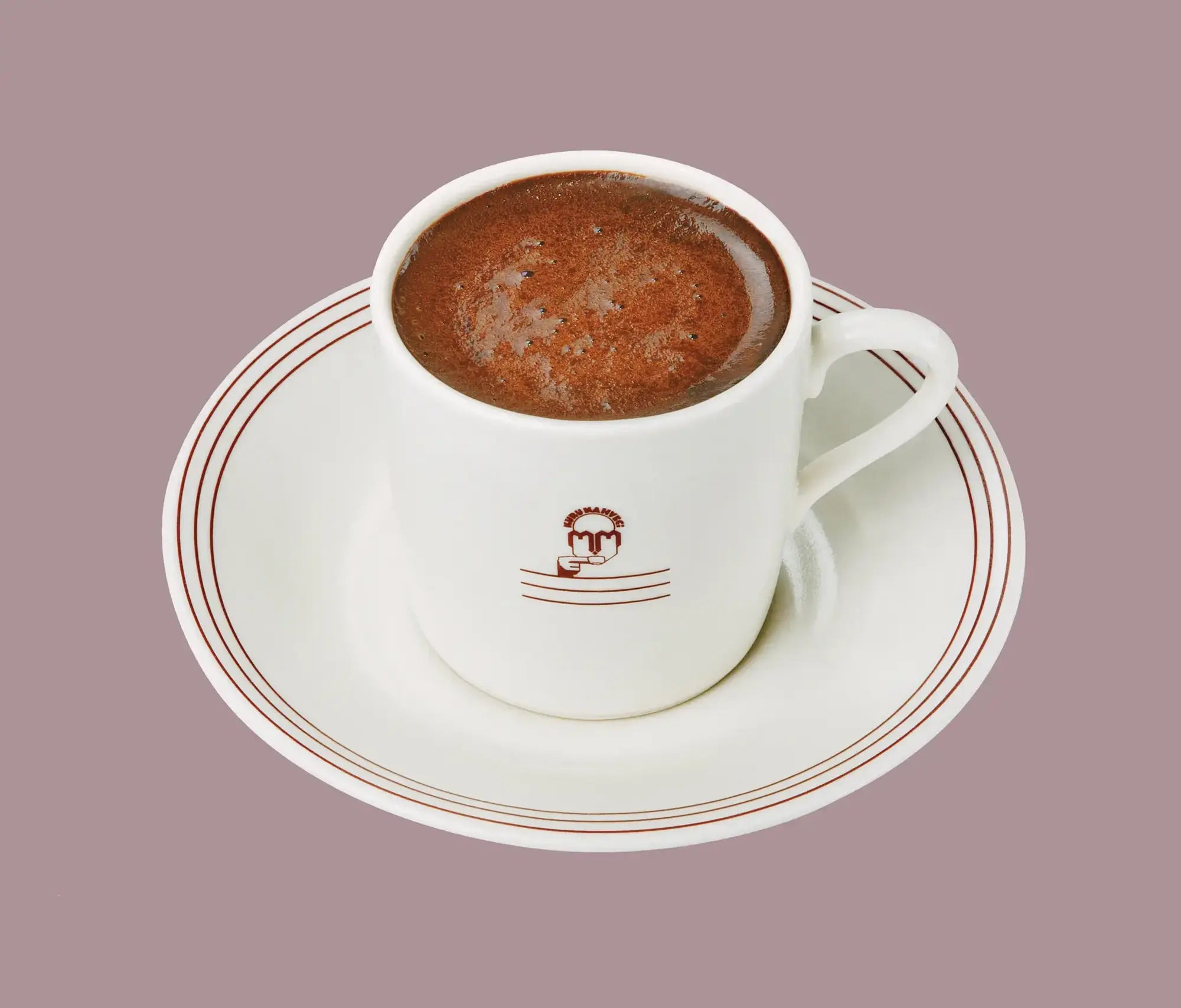DEFINITION AND HISTORY
Turkish Coffee, a caffeinated masterpiece born from the ingenious minds of the Turks. With its distinctive flavor, foamy froth, tantalizing aroma, and enchanting brewing technique and presentation, it boasts its own captivating identity and rich tradition.
The original coffee was produced in the Arabian Peninsula through the boiling of coffee cherries. The innovative Turkish method uncovered the authentic flavor and exceptional scent of coffee. Europe was introduced to coffee by the Turks and it was commonly enjoyed as Turkish Coffee.
Turkish Coffee is made from high quality arabica coffee beans from Central and South America that are blended and carefully roasted, then very finely ground. The coffee is mixed with water and the desired amount of sugar and cooked in a ”cezve”, or Turkish coffeepot. The coffee is served in small cups. The coffee must be left to stand for a short time after serving to allow the grounds to settle at the bottom of the cup.
In contrast to other brewing methods, it is especially important that the coffee comes to a boil while brewing. The finely ground coffee is brought to a slow boil over low heat.
Thanks to its strong body, delicious flavour and long-lasting aroma, a cup of steaming hot Turkish coffee is a guaranteed favourite with all coffee lovers.
HISTORY
Istanbul was introduced to coffee in 1543 by Özdemir Pasha, the Ottoman Governor of Yemen, who had grown to love the drink while stationed in that country.
Prepared in a cezve or ”güğüm” (copper vessel) using the technique invented by the Turks, the drink became known as Turkish Coffee.
The Turkish public became acquainted with coffee through the establishment of coffeehouses; the first coffeehouse opened in the district of Tahtakale in 1554 and others rapidly cropped up all over the city. Coffeehouses and coffee culture soon became an integral part of Istanbul social culture; people came here throughout the day to read books and beautiful texts, play chess and backgammon and discuss poetry and literature.
As coffee became a staple in palace cuisine as well as in private homes, its consumption increased dramatically. The raw beans were roasted in pans and then ground in mortars. The coffee was then brewed in cezves and served with great care to esteemed friends.
Thanks to the efforts of merchants and travellers who passed through Istanbul, and even Ottoman ambassadors, Turkish Coffee’s renown soon spread to Europe and ultimately to the whole world.
In 1871, Kurukahveci Mehmet Efendi was the first company to sell roasted and ground coffee to the public.
Today, Turkish Coffee is synonymous with Kurukahveci Mehmet Efendi both in Türkiye and around the world.
CHARACTERISTICS
Turkish Coffee…
- Is the world’s oldest coffee brewing method.
- Consists of foam, coffee and grounds.
- Remains on the palate longer than all other types of coffee thanks to its soft and velvety foam.
- Remains hot for a long time thanks to its delicious foam, which keeps its form for several minutes after the coffee is poured.
- Cools much more slowly than other varieties of coffee as it is served in thin cups, thus prolonging the drinking pleasure.
- Has an unforgettable flavour thanks to its thick, syrupy consistency that stimulates the taste buds.
- Is thicker, softer and more aromatic than other types of coffee.
- Is easily discernible from other types of coffee due to its unique aroma and foam.
- Is the only coffee that can be boiled.
- Is the only coffee that can be used to predict the future. Cafedomancy: The use of coffee grounds to cast fortunes.
- Is unique in that its grounds are left in the cup: the coffee is not filtered or strained because the grounds settle at the bottom of the cup.
- Does not have to be sweetened after it has been poured as the sugar is added during preparation.
- Is healthy as the grounds that settle at the bottom of the cup are not drunk.
- Does not cause bloating, even if enjoyed often, as it is served in small portions.
- Contains less caffeine in one serving than other types of coffee.
Portion Amount of Caffeine Turkish Coffee 65 ml (one cup) 60 mg Espresso Coffee 60 ml (one cup) 100 mg Filter Coffee 150 ml (one cup) 115–175 mg Instant Coffee 150 ml (one cup) 65–100 mg Tea 150 ml (one cup) 70 mg - Is practical and economical because one only needs a cezve to brew it.
- To be enjoyed at its best, must be consumed immediately after roasting or else properly packaged in order to preserve its aroma.
Merging traditional attention to detail and the latest technology, Kurukahveci Mehmet Efendi carefully roasts, grinds and packages delicious Turkish Coffee.
Our specially packaged delicious Turkish coffee can be purchased in any desired quantity. Its taste and aroma will remain as fresh as the day it was ground until its expiration date.
TURKS AND COFFEE
Drinking coffee is a unique pleasure for Turks.
A cup of Turkish coffee is endowed with a variety of important connotations for Turks: friendship, affection and sharing. This is best illustrated in the old saying: ”A single cup of coffee can create a friendship that lasts for 40 years”. Turkish coffee is such an intrinsic part of Turkish culture that it has given its name to the word for breakfast, ”kahvaltı”, which translates as ”before coffee”, and is derived from the words ”kahve” (coffee) and ”altı” (before).
Serving a cup of Turkish Coffee is also a way of sealing a friendship. The preparation and care taken by a host in serving Turkish Coffee to his guests is an important aspect of hospitality. In Türkiye, it is traditional for a prospective bride to serve coffee to her suitor and his family when they come to ask for her hand in marriage. Accepting a cup of coffee is a source of pride to the person who offers it. This is illustrated in the Turkish expressions ”his coffee can be drunk” and ”I would drink a cup of your coffee”.
Nothing compares to long, friendly conversation over a cup of frothy Turkish Coffee, followed by having your fortune told.
Discover Authentic Craftsmanship with Traditional Tools.
There are several stages involved in preparing traditional Turkish Coffee: roasting, cooling, grinding, cooking and serving. The traditional tools used in these processes have for the most part fallen victim to the passage of time and modernisation; today, they can only be found in museums, private collections and the windows of antique shops. In the order of their use, they can be described as follows:
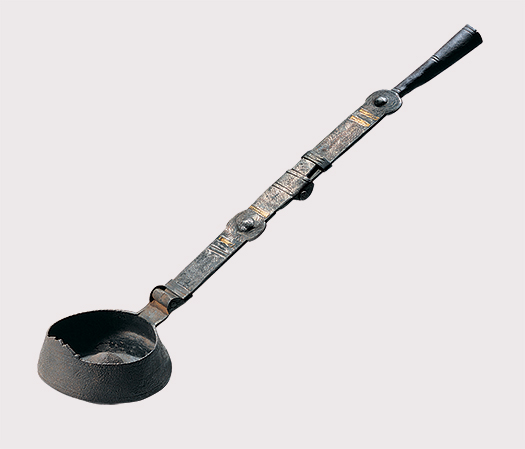
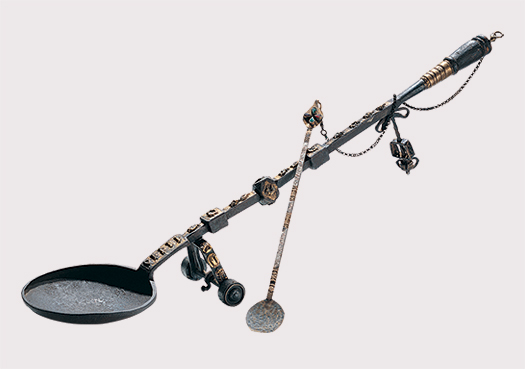
Two types of roasters were used, a “tava” (pan) or a “tambur” (cauldron). The pans were made either from beaten iron or, more rarely, from fired clay. The pans had long handles, some of which could be folded. Some of the large pans were mounted on wheels to make it easier to pass them over the fire. Others had roasting spoons attached to the pans by a chain. Roasting was performed over a stove or grill. Cauldron roasters were made from sheet iron and consisted of a hand turned cylinder fitted onto a small, square grill.
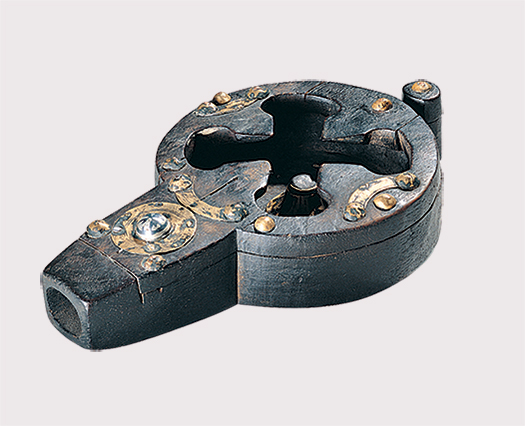
The roasted beans were transferred into hand carved wooden cooling bins that featured an opening for pouring out the coffee. The matchless cooling bins were decorated with carved motifs and are one of the finest examples of Turkish woodwork.
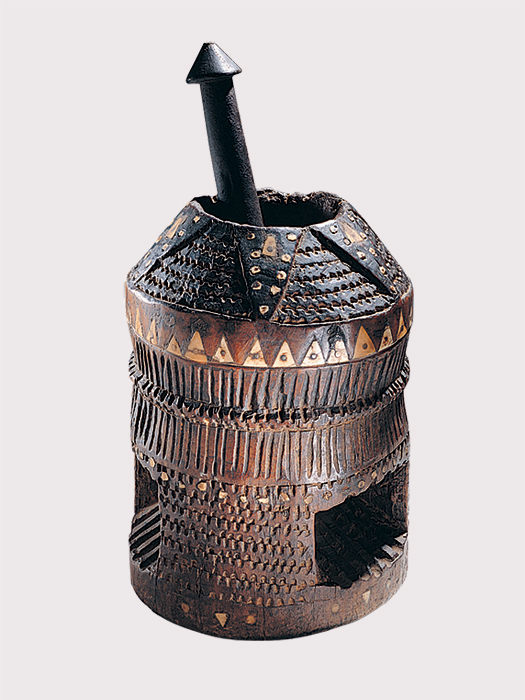
The beans were then ground either with a “havan” (mortar) or in a “dibek” (large mill). “Dibek” were handmade from wood, marble or stone; “havan” were made from cast bronze.
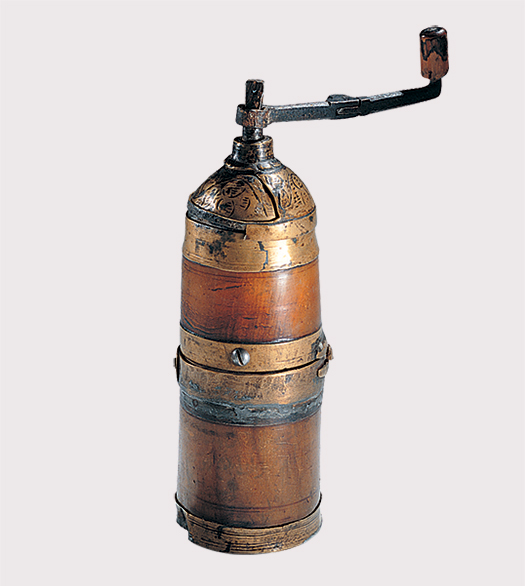
The beans were ground using pestles or mallets. Two types of mills were used: hand mills and larger “yer” mills. The hand mills were usually made of brass, although some had wooden handles. The “yer” mills were made of brass or wood, both of which had iron mechanisms.
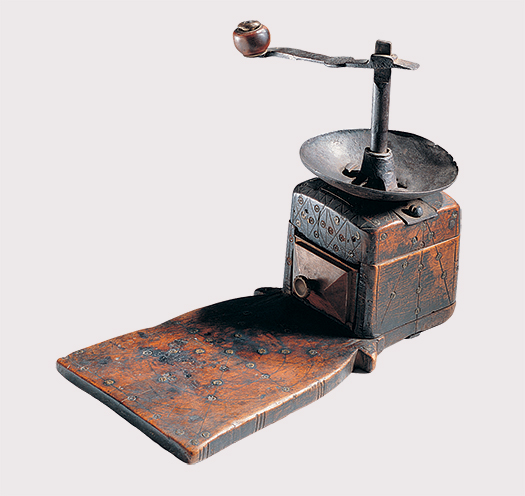
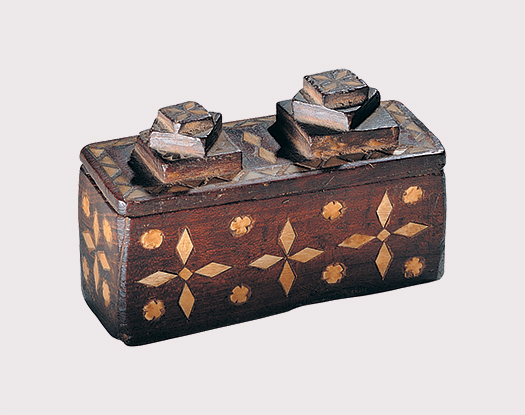
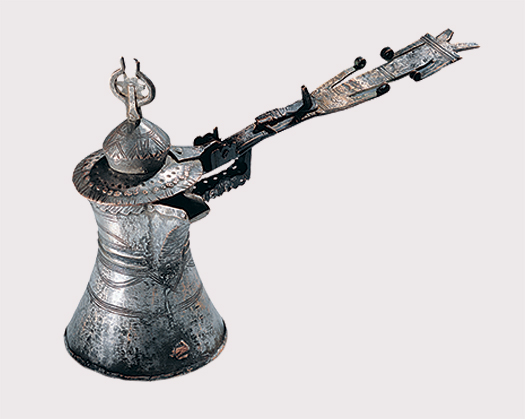
Turkish Coffee is made from medium roasted, finely ground beans. It is boiled very briefly either with or without sugar. It is best if it has a good froth. It was originally cooked in tinned brass or copper vessels. Later, these were replaced by “cezve” made of copper or brass, which remain in use today.
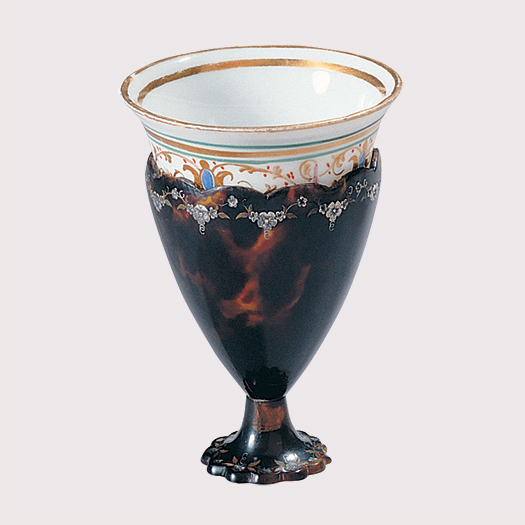
Turkish Coffee has always served as a symbol of love, respect and hospitality. Turkish Coffee was served in special coffee sets by “kahveci güzeli” or coffee beauties in an atmosphere of great solemnity. A coffee set consisted of a coffee cloth, tray, cup holders, cups and saucers, as well as a serving “güğüm” that helped to keep the coffee warm. The finest trays, cup holders and saucers were made from “tombak”, or gilt copper. Later, these were made from silver and copper. Decorated with the “tuğra” or imperial seals, carvings or bas-relief work, they represent the pinnacle of Turkish metal workmanship. Handleless cups with holders were made of fine porcelain or china. The cups with holders were replaced over time by the handled cups made of porcelain and occasionally china that we use today.
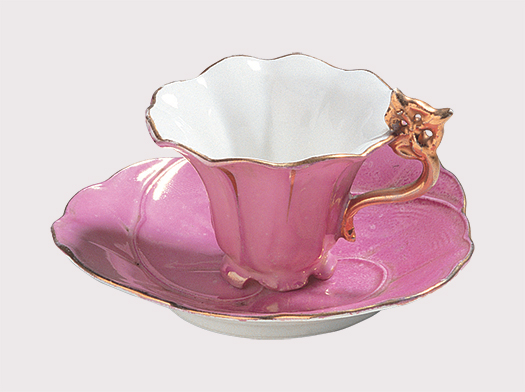
Turkish Coffee is the precursor of all the varieties of coffee served in Europe and around the world. Kurukahveci Mehmet Efendi has been producing world-renowned delicious Turkish Coffee since 1871 and is synonymous with the rich history of the beverage.


